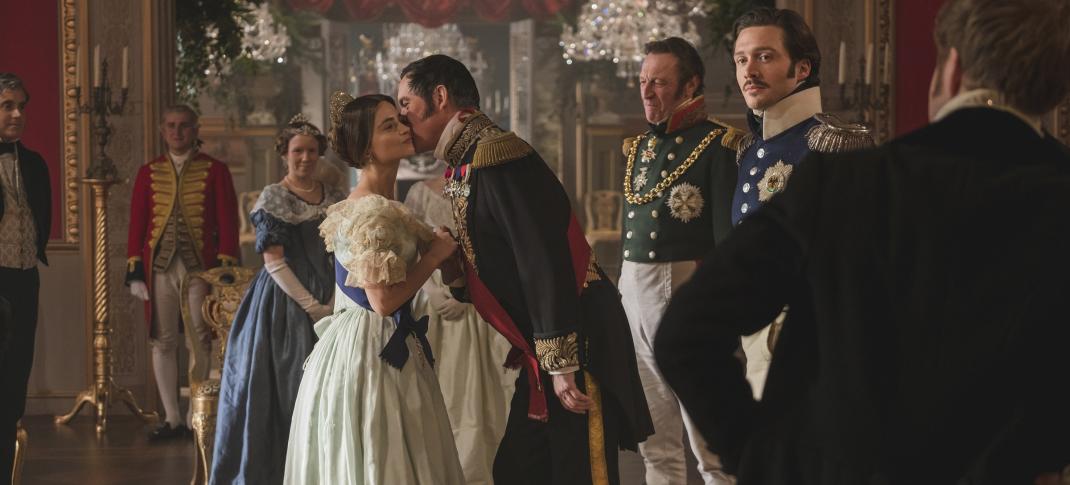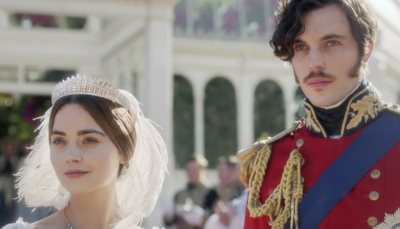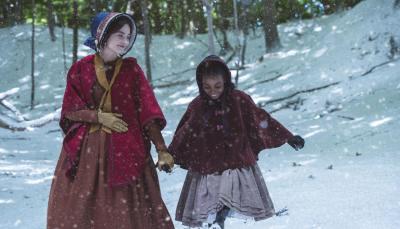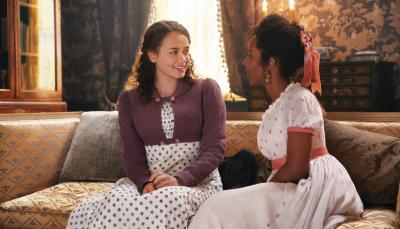Know Your 'Victoria' History: "A Soldier's Daughter/The Green-Eyed Monster"

Victoria, Season 2 MASTERPIECE on PBS Episode One - "A Soldier's Daughter" & "The Green-Eyed Monster" Sunday, January 14, 2018 at 9pm ET (2 Hours) New mother Victoria is impatient to return to the business of ruling a nation, while Albert attempts to protect her from the increasingly desperate news regarding British soldiers in Afghanistan. Victoria is thrown into turmoil by the realization that she is pregnant again, and her equilibrium is further threatened by Albert’s burgeoning friendship with the lady mathematician, Ada Lovelace. Shown from left to right: Jenna Coleman as Victoria, Alex Jennings as Leopold, Andrew Bicknell as the Duke of Coburg, and David Oakes as Ernest For editorial use only. ©ITVStudios2017 for MASTERPIECE
Think you know the history of Queen Victoria's reign? Wondering how much of the history portrayed by PBS series Victoria is accurate? We run down the truth behind the drama in the Season 2 premiere, "A Soldier's Daughter/The Green-Eyed Monster."
The 1842 Kabul Retreat
Victoria: I think the fighting spirit of this country is more important than plumbing.
Victoria grounds the opening episode in a real-life incident, during the 1840s Afghan war. Quite a bit of the real situation is edited down for television. For instance, the incident did not start at the Khyber Pass, but in fact, began back in Kabul, as the 14,500 strong garrison (not 4,000 as the show claims) was forced to leave the city. (Hence the historical name of the event is "The Kabul Retreat.") The TV show drops us into the unfolding disaster about halfway through the calamity, when British forces reached the mountain passes and found themselves having to cross in the middle of winter. The Prime Minister, Robert Peel, notes that they have assurances of safe passage from Afghan Prince Wazir Khan, which was true. The Duke of Wellington notes they're not worth the air used to speak them, which was also sadly true.
Some historians call it the worst military disaster the British army faced until World War I. The truth is, most of the assembled forces (and their camp followers) died from the terrible conditions over the weeks and months of slow going in the snows: freezing to death, starving, illness, etc. If that wasn't enough, Khan then ambushed them. There were actually several attacks over the journey, pairing the forces down over and over, but the show simply boils them down to one big one, based on the final attack near the village of Gandamak, which was when the last of the survivors (about 65 or so) surrendered.
Assistant Surgeon William Brydon is recorded as the only one to make it alive to Jalalabad, and when asked where the army was, supposedly answered: "I am the army." For the record, Brydon wasn't strictly the sole survivor, some of the prisoners did eventually make it home, but for the show's purposes, it's close enough. (Though he probably didn't actually get to meet Victoria herself.)
Churching
Victoria: I am not a woman, I am a Queen.
Yes, that was a real thing! It was, in fact, a centuries-long tradition at that point. Women could not go out in public after having a child because they were seen as unclean. That was such a known thing that it makes it a little weird that Victoria has it mansplained to her on the show, even if we know that explanation is being given for the audience's benefit since nowadays, such patriarchial hysteria would be seen as over the top.
Victoria was a religious woman, who believed deeply in God. (He granted her the divine right to run the monarchy after all! It's only polite.) It is highly doubtful she wouldn't have known she needed to be "churched" and cleansed after having a child. Chances are, she would have believed in the need for it herself. Not that her feminist complaints about it aren't delightful, but they're factually anachronistic. That being said, one of the highlights of the first half of the episode was the baptism of Victoria the daughter. The show really restages these big events well.
What is the "Mistress of the Robes"?
Duchess of Buccleuch: In my day, no unmarried gal would be permitted to read novels.
A position created under Queen Mary in her first year ruling, the position of Mistress of the Robes was originally what it actually sounds like, a woman whose job it was to be in charge of the Queen's robes and jewelry. As the centuries have passed, and it no longer takes an army of women to keep the Queen in royal finery, the position has morphed into one of ceremonial value, as one of the Queen's Ladies in Waiting. Over her life, Victoria had no less than ten women who filled the position, with Harriet Sutherland-Leveson-Gower, Duchess of Sutherland holding it on and off no less than four times. (So yes, she'll be back in the position in later seasons.)
The current holder this season, Charlotte Montagu Douglas Scott, the Duchess of Buccleuch played by Dame Diana Rigg, held the job for five years. It should be noted she was no septuagenarian though. (Rigg is currently 79.) Born in 1811, Scott was all of 30 when she took the job. She and the queen were lifelong friends, and Victoria was godmother to one of her children. But, historical accuracy aside, it would be far less believable to have a younger woman play the role with all that old lady snap. And we need Diana Rigg in this show. No one else could deliver these lines quite as perfectly, and the comic relief she brings to the series really helps lighten up some of the deepest melodrama.
Who was Lady Lovelace?
Lord Melbourne: Jealousy is the most tedious emotion.
Augusta Ada King-Noel, Countess of Lovelace, was indeed the daughter of Lord Byron, his only legitimate heir, and a mathematician. Her father left her mother a month after Ada was born, and died overseas when she was still a child. Her mother drove her interests into maths in an attempt to keep her from ever getting into poetry, lest she might follow in her father's footsteps, or worse, be rumored to do so. She married William King-Noel, 1st Earl of Lovelace, and they did have three children.
She was known for her writings and work on Charles Babbage's proposed "mechanical general-purpose computer", or what the show calls "the Analytical Engine." Her most famous work, simply entitled "Notes" is considered to be the first computer program ever written. Because she did have some of her father's poetic fancies, despite her mother's trying to push that away, she was one of the first to ever conceive of what computers could do in the future, beyond just number crunching, which was all Babbage and his ilk ever focused on. She might not have predicted iPhones, but much of what she forsaw came true. She was the "prophetess of the computer age."
She died at the age of 36, from uterine cancer. Had she been born a man indeed.
Boy Jones
Boy Jones: That's a nice bit o' lace missus.
One of the most frustrating subplots of the latter half of the premiere is the street urchin who "infiltrates" the palace and makes everyone, including Skerrett's new assistant Miss Cleary, think there are ghosts haunting the place. This is supposed to highlight several things about Buckingham Palace in the time period, starting with the complete lack of security in the way we think of it today.
During the 1800s, the very idea that a palace needed to be on lockdown was simply foreign to most people, the gates and guards were seen as enough. The technology, the idea of terrorism, the entire mindset of our world simply didn't exist then. Add to that the religious beliefs of the age with the emphasis on spiritualism, ghosts, and the stuff from which the notions of "gothic horror" sprang (which are today referred to as "Victorian" attitudes) would all have contributed to the ability of something like that going on for far longer than logic would dictate to us. The Irish stereotyping of Cleary, and Penge once again getting to be racist towards her over it is correct for the period as well, even if it is unneccesarily ugly.
Not only was actually possible for something like this to occur but "Boy Jones" was real. He broke into the palace four times over the course of a few years, starting in 1838. The first time he was caught, it was with underwear he'd stolen from Victoria's dressing room stuffed down his trousers. Guess he really did know a nice bit o'lace.




